Using Science Cornell Notes is not only engaging for students, it is essential to help them grasp complex scientific concepts. We all know teaching middle school science can be both exciting and challenging. So, let’s talk about the magic of the Cornell notes model, and how they can work wonders in your science classroom.
Before we jump into it, if you’re anything like us, you might be swamped with the endless sea of science information online, unsure where to even begin. Trust us, we’ve been there. That’s why we’ve done the work to clear away that clutter. Presenting The Ultimate Guide to Online Science Teaching Resources – our special present for you. We understand that science teachers are a unique bunch, and we’re here to lend a hand. Click here for your FREE guide to online resources for busy science teachers.
How to do Science Cornell Notes
Science Cornell Notes is a framework to capture and understand information during lectures, reading, or while studying for a test. This method consists of dividing your note sheet into three different sections, each serving a specific purpose. The larger section on the right is designated for recording the main ideas or concepts. On the left side, students can jot down their own comments, graphs, concept maps, doodles, clarifications, or personal reflections. In the lower portion of the page, students will summarize their learning.
These notes are all about active learning. It’s not just about copying down information; it’s about thinking, processing, and owning what you’re learning.

Master Science with the Benefits of Cornell Notes in Middle School
Imagine a note-taking strategy that not only helps your students retain information but also enhances their critical thinking skills. That’s exactly what Cornell notes bring to the table. Research shows that note-taking, when done right, can significantly improve learning outcomes. Here are some simple note-taking strategies, and their benefits:
- Use a targeted note-taking strategy to improve learning.
- Include visuals, graphs, and concept maps to help students grasp and retain information better.
- Allow students to pause and revise their notes to improve learning.
- Provide differentiated note templates to help students better understand and absorb the science concept.
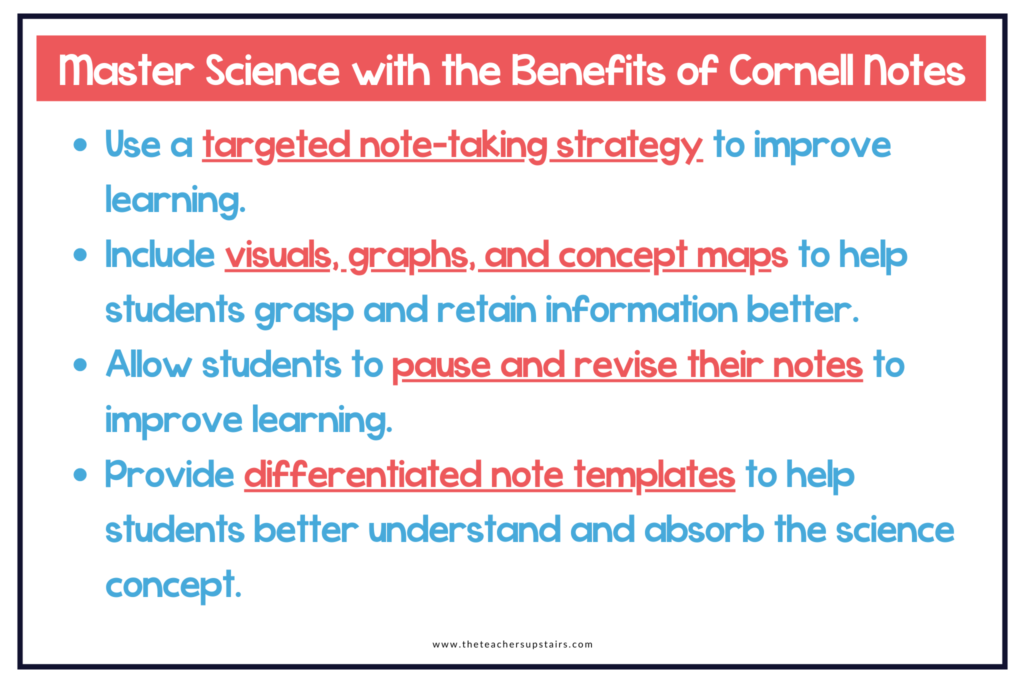
Let’s Talk about Cornell Doodle Notes: Where Learning Gets a Visual Boost
Let’s face it, reading lengthy paragraphs of text, or listening to a lecture can sometimes be, well… boring. It’s easy to get lost in the sea of words. But, with Cornell notes, we bring visuals to the rescue. Our Cornell note-taking template encourages students to doodle, sketch, and create graphs alongside their written notes. We all know that visual aids make complex concepts come to life for students.
With Cornell notes, students aren’t just listening, they’re summarizing, rephrasing, and connecting the dots – all in real-time. This active engagement helps students process information more deeply and retain it for the long haul. Our Cornell Notes is a colorful roadmap of engaging scientific understanding.
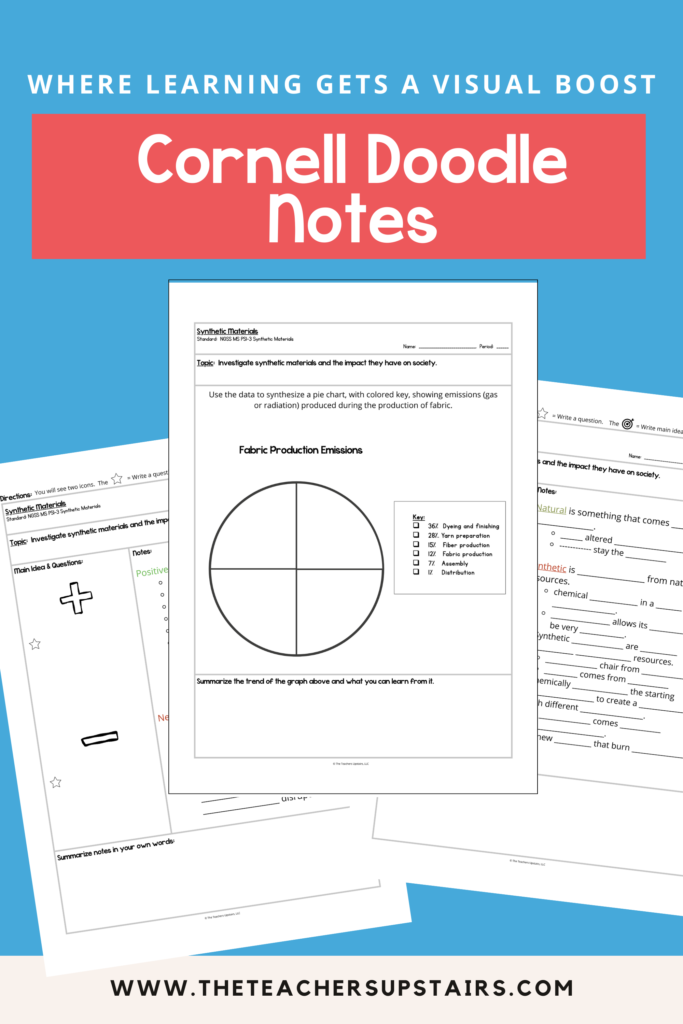
Level Up the Learning-Cornell Notes to Differentiate Instruction:
Now, here’s the real magic of our Cornell notes templates – they are super versatile and cater to different learning levels. We know our science classes are filled with diverse learners, and that’s why we’ve got three different templates: low, mid, and high-level.
Each of our Cornell notes templates is thoughtfully designed to suit different learning styles. The structured guidance in the templates helps all students, regardless of their learning level, navigate through the science concepts with ease and confidence.
A Customized Learning Experience:
You know how they say, “One size fits all?” Well, not in our science classroom. Our Cornell method template allows students to tailor their learning experience. Included with the Cornell Notes templates, is a Google™ slide deck. On each slide deck, we have embedded a text-to-speech audio clip. This allows students to go as fast, or as slow as they need to and gives students the option to pause and repeat the material as often as needed to grasp the concept.
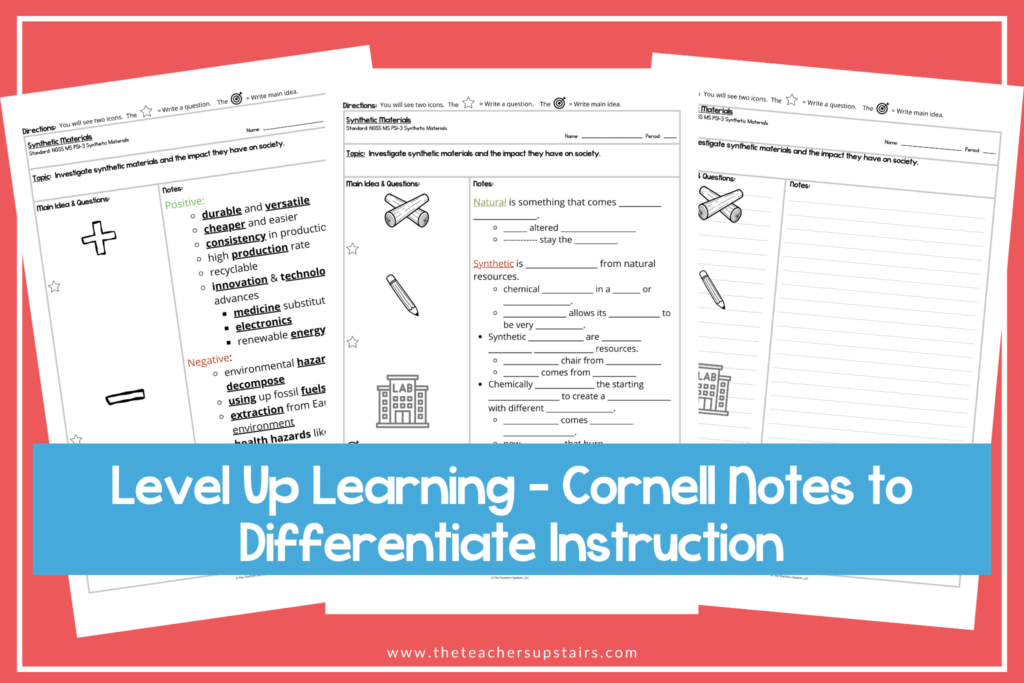
How to Use Our Differentiated Cornell Notes in Class:
Alright, now let’s dive into the fun part – implementing our differentiated Cornell notes in science class. Here are five easy-peasy ways to supercharge learning with our Science Cornell Notes:
#1: Close reading text.
Each differentiated guided science Cornell notes comes with an original real-world text that explains the science concept and uses it in ways that a teenage brain can understand. We have included different close reading strategies you can use from highlighting and underlining to annotating with different symbols. This can be a lesson in and of itself if you choose. It can also be used as a segway to remind students about the concept you have been teaching, to get their brains to make those all-important connections.
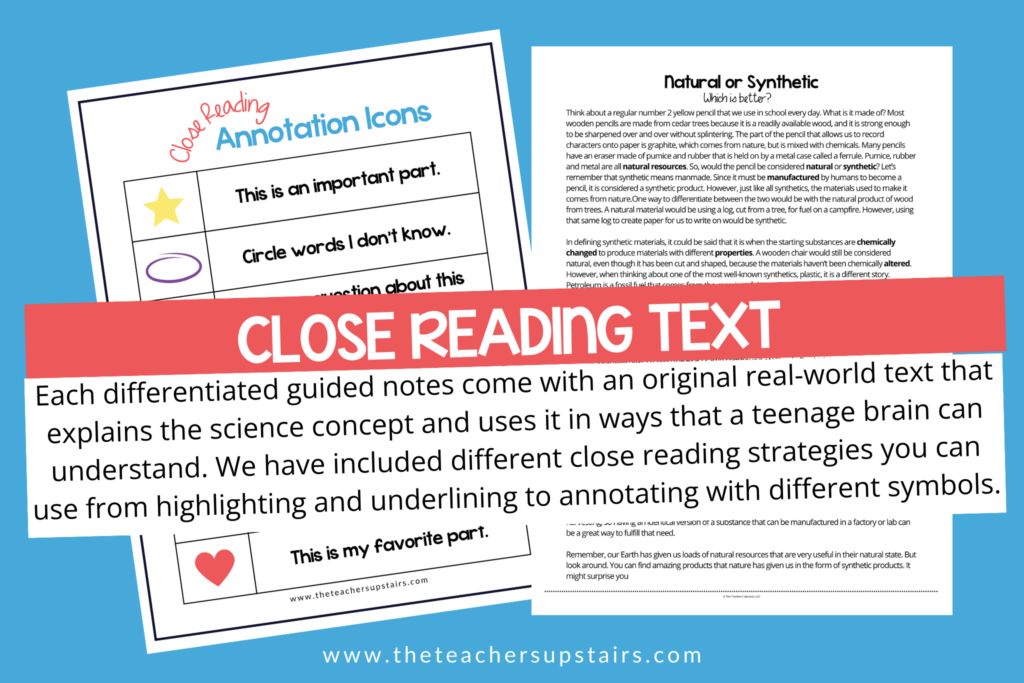
#2: Use as a stand-alone activity, allowing for small group instruction
This can be a plug-and-play lesson where students can choose which notes page (of the three included differentiated notes) works best for their brain, then turn them loose. Once students have completed the notes, they can review, re-teach, or explain a concept in small groups or with a partner. During this time that students are completing independent notes, you can meet with other students in small groups, or one-on-one.
#3: Station Rotation
Ready for a science adventure? Create three stations where students can rotate through, experiencing science from all angles. Each station is dedicated to a specific aspect of learning:
- Close reading: use the Literacy read and close reading strategies to help students dive in and pull apart the science concept you are currently studying.
- C.E.R Response: Use the Literacy read, give students a prompt and have them write C.E.R (Claim, Evidence Reasoning) response. Here are some example prompts you could use:
-
- Prompt for MS-PS1-1: According to the text, why are atoms mostly considered to be empty space? Use the CER framework to discuss the surprising fact that atoms are mostly empty space and explain the analogy provided to help illustrate this concept
- Prompt for MS-PS1-2: According to the reading, what are some signs that show a chemical reaction has happened? Use the CER format to describe things like explosions, color changes, and temperature shifts that help scientists know when a chemical reaction occurred.
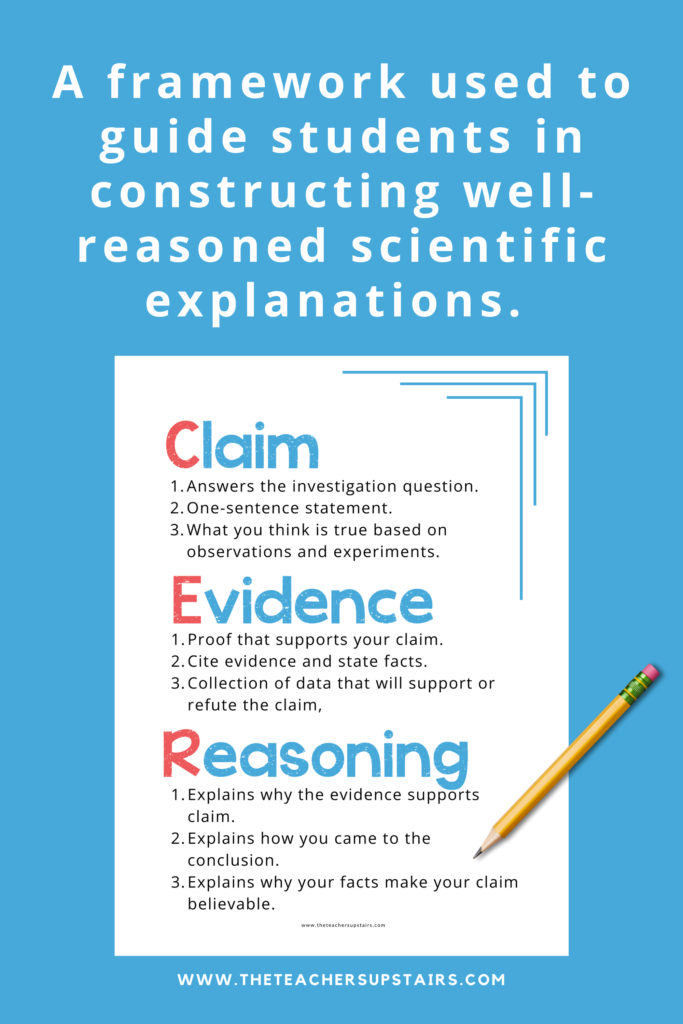
- Words have POWER: present students with the gift of academic language by giving them the vocabulary they need to talk about scientific concepts. If you want a couple of no-prep options to use, here are a few:
- Science Vocabulary Student Journal where students will write the word, a student’s understanding of the definition, an opposite definition, a sentence, and draw a quick sketch.
- “I have… Who Has” game will get students up using their new vocabulary in a natural way.
- Vocabulary Word Work: vocabulary page where students write the word’s definition, and characteristics, use the word in a sentence and draw a picture.
- Guided Differentiated Cornell Notes. Cornell notes are the secret weapon for acing the note-taking game. Assign our Google™ slide deck, with text-to-speech audio, to students and have them complete their designated Cornell notes independently.
#4: Individualized Instruction
Sometimes we have students who are in our class that have a hard time keeping up with the pace. Because of this reality, we have included in each Differentiated Guided Notes resource a Google™ slide deck that has text-to-speech audio embedded on each slide. For students whose brain needs that audio input as they read, or for those students who need multiple repeats of content in order to grasp the concept — these audio bites are magical.
Instruct students to use the differentiated guided notes so they can listen and repeat the information as many times as needed while completing the notes at their own pace. This will give you the peace of mind that they are learning and are anxiously engaged in learning the same content as the rest of the class.
#5: Embrace the 5E Model
You know how we love the 5E model! Incorporate our differentiated guided Cornell notes during the “Explain” phase. To begin, have students do a close reading of the included Literacy Read. Students can read on their own, with a shoulder partner, or with their team. We have included various close reading strategies students can use to help them engage with the text.
Next, have students take notes as you do a whole class instruction with the Google slide deck. Lead students in team discussions, then have one member be a voice for their team and share what they discussed.
In Summary:
There you have it, my science teacher friends – the power of science Cornell notes in a nutshell! It’s not just note-taking; it’s a journey of discovery and understanding. Our Differentiated Science Cornell Notes are designed to make science engaging, accessible, and meaningful for every student.
So, let’s unlock the potential of our young scientists with Cornell notes. Remember, it’s all about active learning, differentiation, and celebrating each student’s unique learning style. With our Differentiated Science Cornell Notes, you’re bound to see your science classroom light up with curiosity, excitement, and a whole lot of “aha” moments!
Alright, it’s time to rock those Differentiated Science Cornell notes like a pro! Let’s go forth and inspire a new generation of science enthusiasts together. Happy teaching, my fellow science superheroes! 🚀
For those who want to know more:
- Barkley, E. F., & Major, C. H. (n.d.). Tips to encourage better note-taking in your class. CrossCurrents. https://kpcrossacademy.org/tips-to-encourage-better-note-taking-in-your-class/
- 4 Ways to Rock the 5E Model in the Science Classroom – using differentiated notes as the “Explain” Phase
- Using differentiated Cornell science notes with the Crosscutting Concepts
- More ideas on using the 5E model and differentiated Cornell science notes as the “Explain” phase.

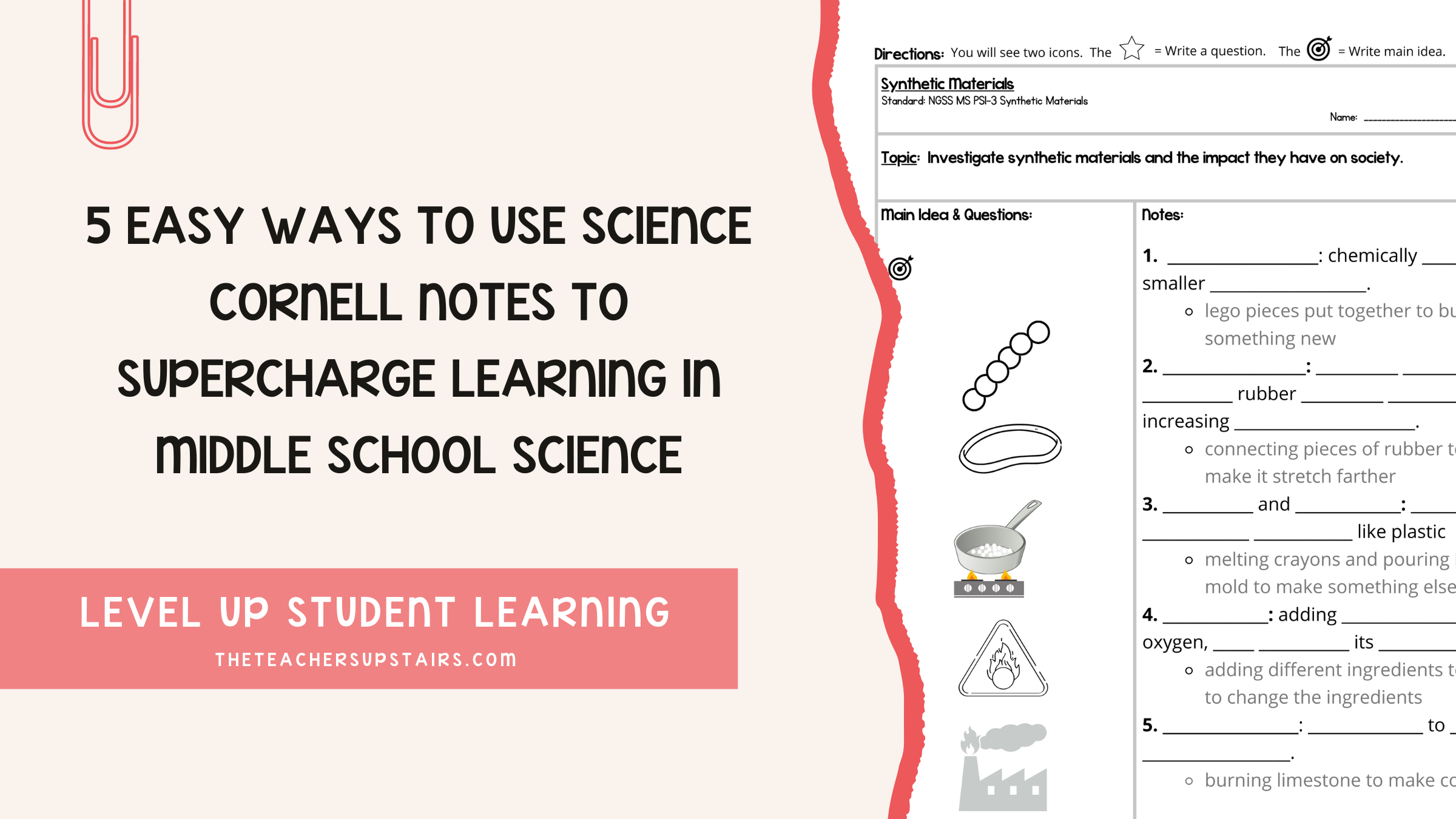
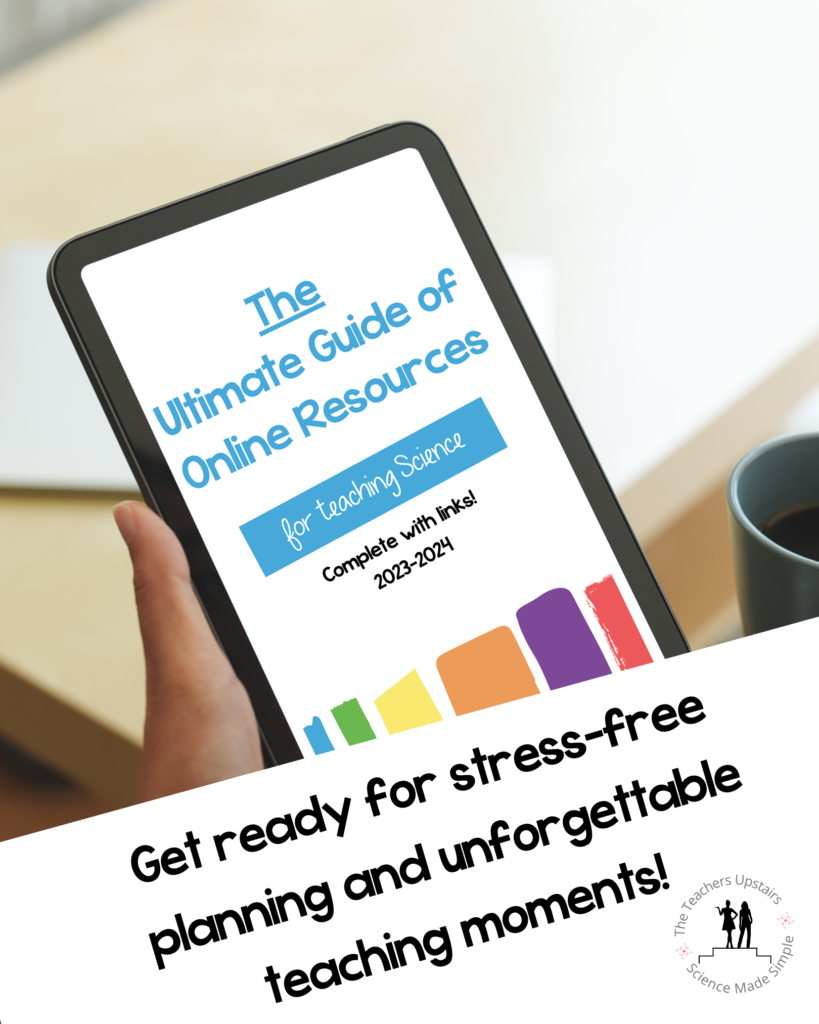

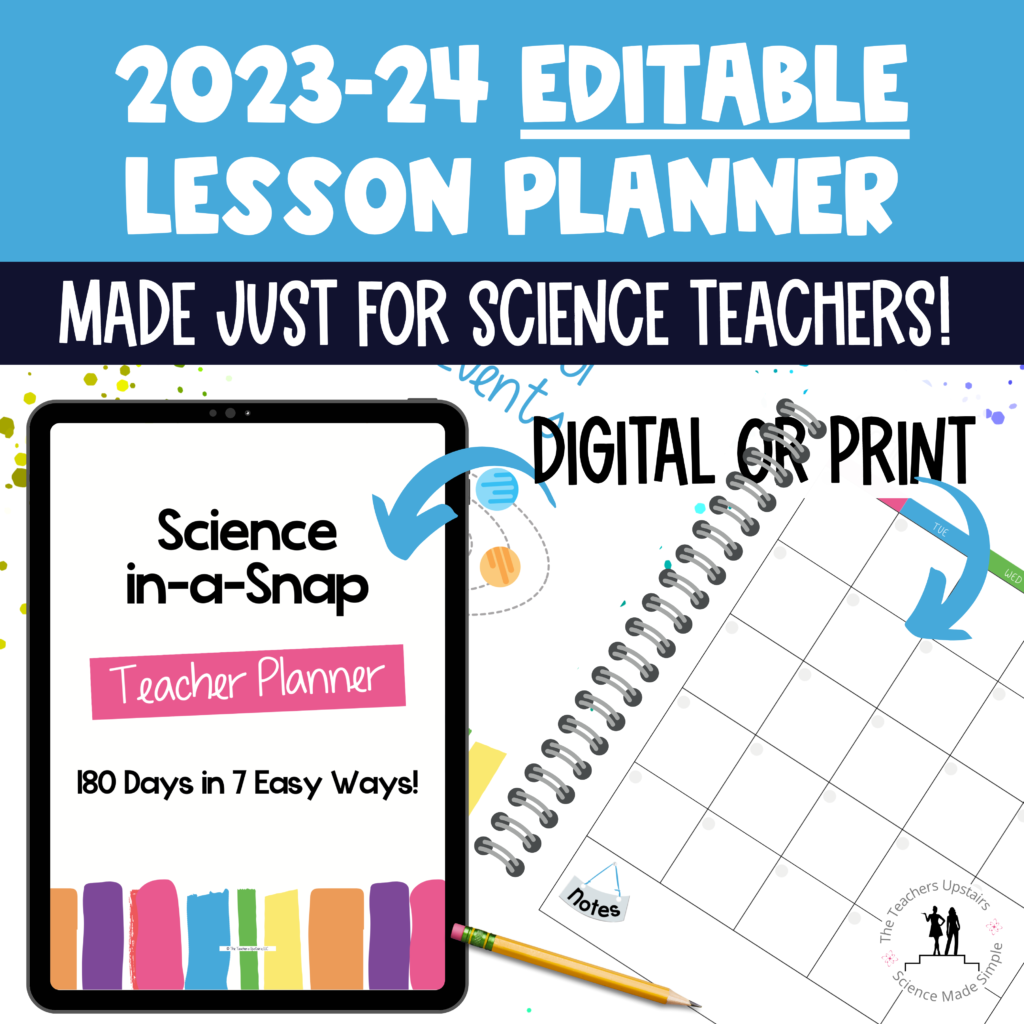
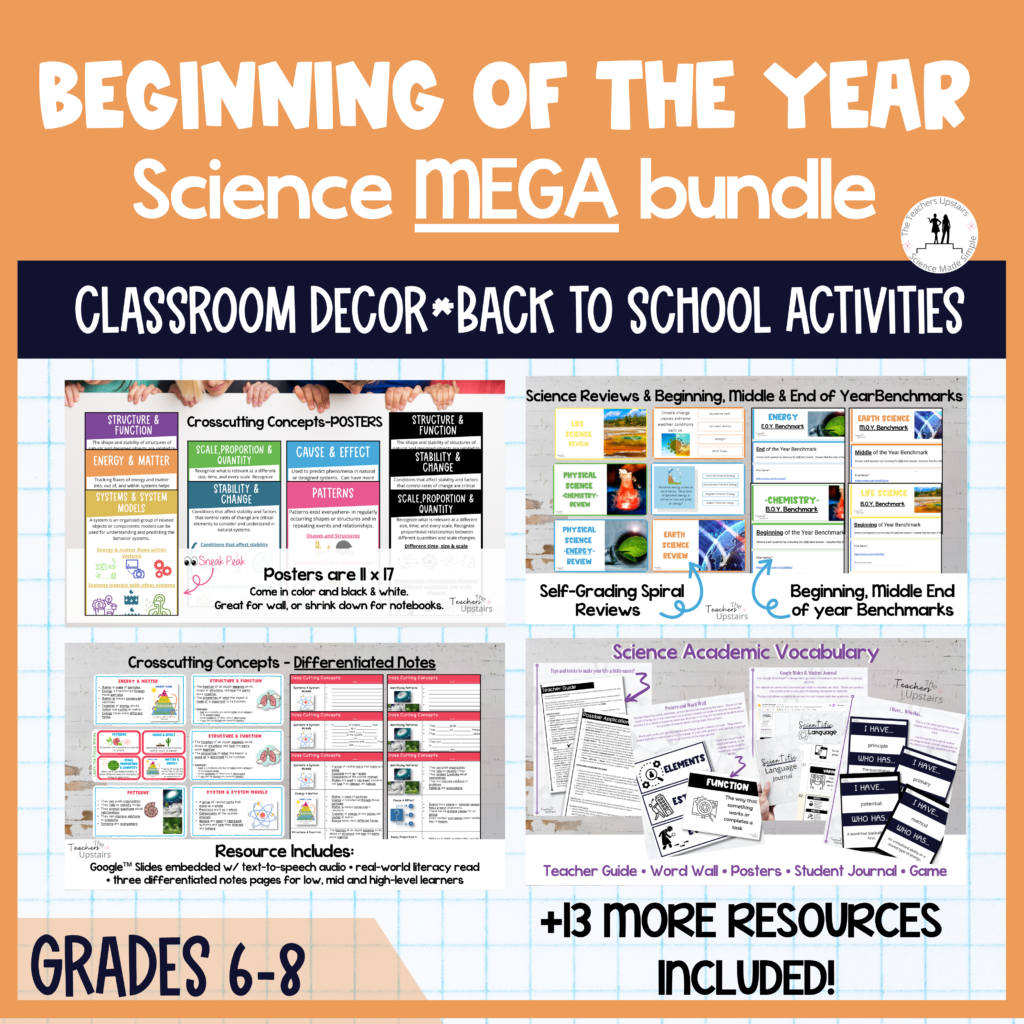
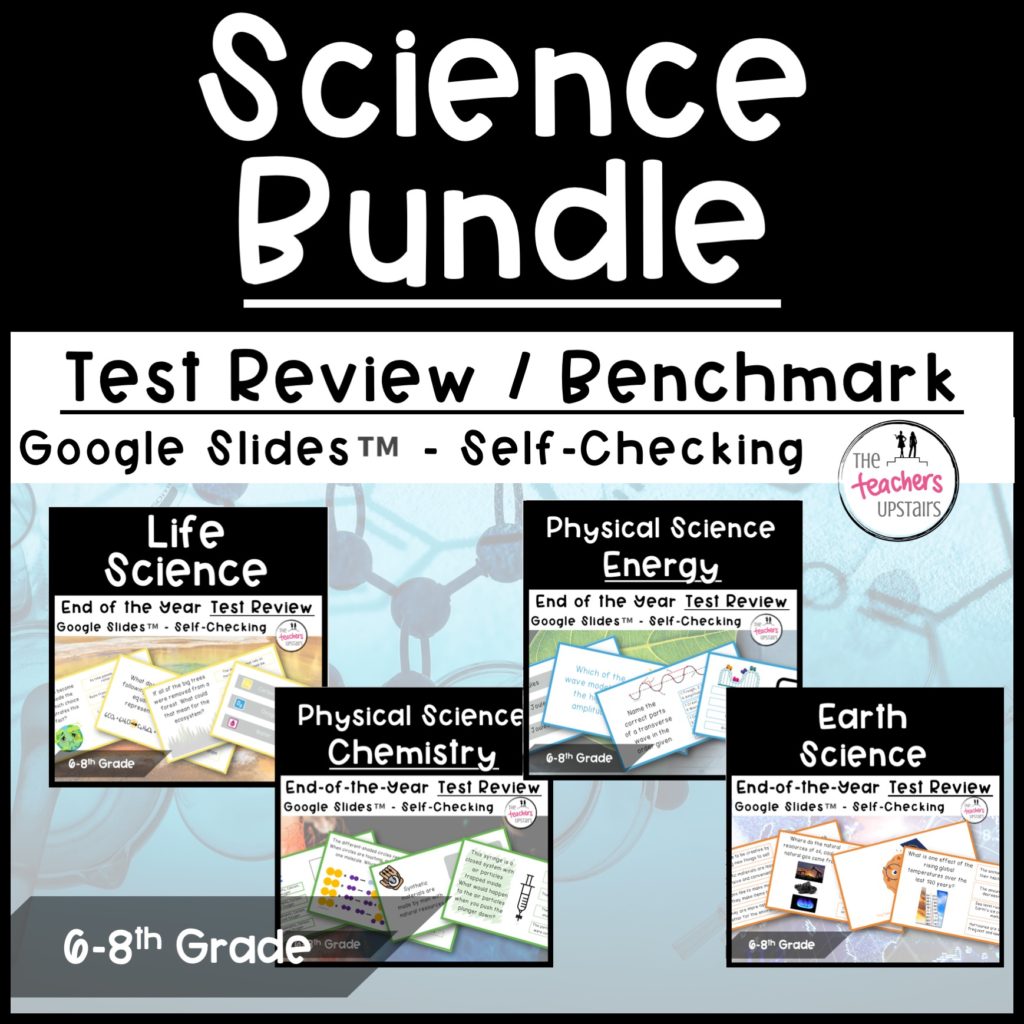
One Response